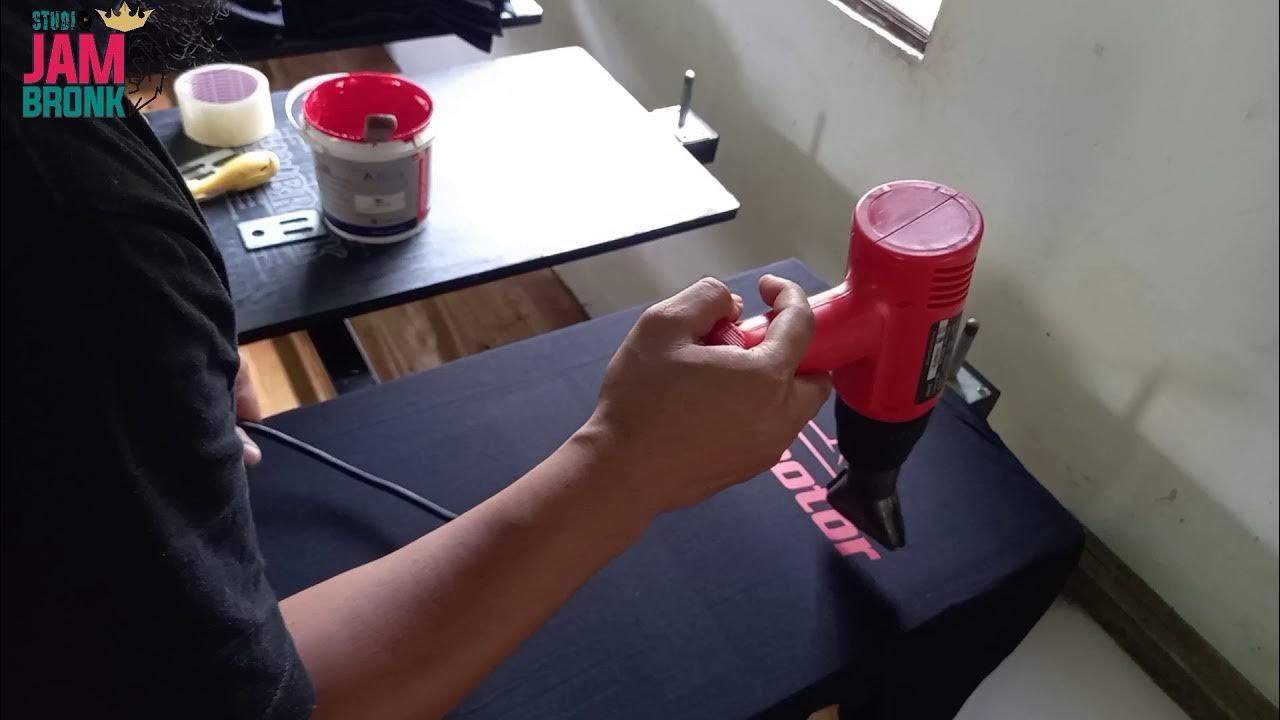afdruk way for beginners
Summary
TLDRThis tutorial provides a step-by-step guide for beginners on how to create screen prints, particularly for cups and glass. It covers essential materials, including RM100 for emulsion and the correct tools for applying and spreading it on a screen. The process includes preparing the screen, applying the image, and exposing it to light (either via a lamp or sunlight). The speaker shares tips for successful prints, such as using kerosene for smoother results and drying the print thoroughly. Troubleshooting tips are also provided for beginners to refine their technique and achieve a successful, translucent print.
Takeaways
- 😀 The video is aimed at beginners and those experimenting with screen printing techniques, specifically for cup glass and plastic materials.
- 😀 The screen printing process for cups, glass, and plastic is similar and can be done using a yellow or white screen, and iron edges.
- 😀 For beginners, the RM100 or a similar photo emulsion (like Soul 1990) is recommended for the screen printing film process.
- 😀 A metal scraper or a tool called kp0 can be used to flatten the emulsion, but care should be taken as the metal tool can be sharp.
- 😀 Use a separate container to mix the emulsion, and tools like bottle caps or lids are fine for this purpose.
- 😀 The emulsion should be spread evenly on the screen and allowed to dry in a dark place, away from light, for about 30 minutes.
- 😀 After drying, a picture or design is placed on the screen, ensuring a one-centimeter distance from the image to the iron for correct exposure.
- 😀 To avoid smudging, vegetable oil or kerosene is used to smooth the design and eliminate air bubbles before exposure.
- 😀 For exposure, the screen can be placed under a lamp or in sunlight for around 25-30 seconds, or up to 2 minutes with a lamp.
- 😀 After exposure, wash off the excess emulsion with water and spray to clean the screen, revealing the design.
- 😀 The successful result is a translucent image on the screen. If the process fails, the emulsion can be removed, dried, and re-polished for a retry.
Q & A
What is the purpose of the video?
-The video aims to guide beginners on how to create screen prints, especially for cups and paper cups, using a specific screen printing method.
What materials are recommended for beginners to use for screen printing?
-For beginners, the video suggests using Bremer RM100 or PhotoSoul 1990 for the screen printing process, and also provides alternatives for tools such as polishing tools or metal shop items.
How should the screen printing film be applied to the cup or paper cup?
-The screen printing film should be applied using a flat, smooth process where the afdruk medicine is spread evenly, using an iron to press the mixture gently, ensuring it's not too thick or too thin.
What should be the drying conditions for the screen printing film?
-After applying the screen printing film, it should be dried in a dark place, away from light, and can be assisted with a fan for about 30 minutes.
What tools can be used for the smoothing process after applying the afdruk medicine?
-The video mentions two options for smoothing: one is a metal tool from a metal shop, and the other is a specific smoothing tool called kp0, available at a screen printing equipment shop.
What is the next step after the drying process of the afdruk medicine?
-After the drying process, the image should be pasted onto the dried screen printing film. The image must be aligned carefully with the correct distance from the iron, which is about one centimeter or the width of one finger.
How should the image be attached to the screen printing film?
-To attach the image, vegetable oil, oil, or kerosene can be used. The kerosene helps to get a better result by preventing smudging and promoting a quicker drying process.
What is the purpose of the irradiation process in screen printing?
-The irradiation process, whether done using a lamp or sunlight, helps expose the image to UV light for a fixed duration (about 25 to 30 seconds), which hardens the design onto the film.
How long should the screen be irradiated using sunlight?
-If using sunlight, the screen should be exposed for about 25 to 30 seconds to ensure proper exposure and hardening of the image.
What should be done after irradiation is completed?
-Once the irradiation is completed, the image should be rinsed with water to clean off any remaining oil or kerosene, revealing the design that has been transferred onto the screen.
What happens if the screen printing process fails?
-If the process fails, the Brahmin layer might be removed. In such cases, the layer should be dried and polished again, and the process should be repeated to achieve the desired translucent result.
Outlines

This section is available to paid users only. Please upgrade to access this part.
Upgrade NowMindmap

This section is available to paid users only. Please upgrade to access this part.
Upgrade NowKeywords

This section is available to paid users only. Please upgrade to access this part.
Upgrade NowHighlights

This section is available to paid users only. Please upgrade to access this part.
Upgrade NowTranscripts

This section is available to paid users only. Please upgrade to access this part.
Upgrade NowBrowse More Related Video

Ultimate Screen Printing Guide: Screen Creation Techniques

CARA SABLON PLASTISOL | CARA SABLON KAOS MANUAL | CARA SABLON KAOS MANUAL MEMAKAI TINTA PLASTISOL

Tutorial Membuat Eco Printing Teknik pounding

Como fazer vídeo React pelo celular

Tutorial Download Vite-React dan Tailwind CSS

Membuat Database MYSQL di XAMPP menggunakan CMD
5.0 / 5 (0 votes)